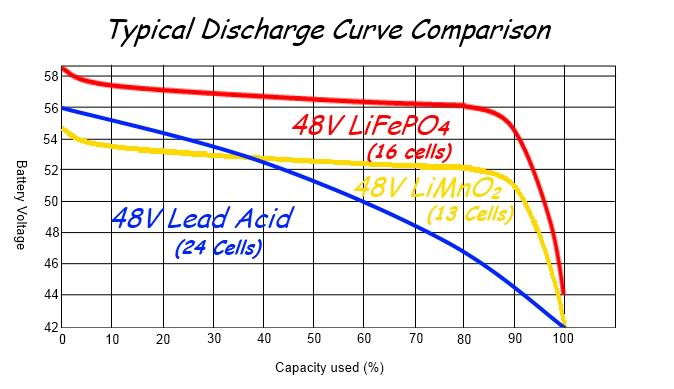** What can be seen on the display to make a decision when to recharge the battery?
The display continually shows the following "real time" information:
Actual Current draw
(Shown in the top left section in Amps)Actual Battery Voltage
(Shown in the top right section in Volts)Actual Power being consumed
(Shown in the lower right section in Watts)
In the lower left section of the display it also displays the following information in sequence at ~2 second intervals:
- Battery Capacity used (Ah)
- Battery Energy consumed (Wh)
- Maximum Current Drawn (Amps)
- Minimum Voltage (Volts)
- Maximum consumed Power (Watts)
The one you would be wanting will be the "
Battery Capacity used" reading that shows what capacity of the battery has actually been consumed.
If you have a 10Ah battery and the display shows that 8Ah has been used, there should still be ~2Ah remaining in the battery.
(Assuming the battery is in good condition and was fully charged before use.)** Since high current passes through the Watt Meter it heats up, how it is cooling?
The wattmeter itself only consumes a very small amount of current
(~13mA or ~0.013A) so there is no actual heating up to worry about.
** Another option for solving:
I want to focus on understanding the solution (important for me to understand), for example, if I connect a normal volt meter to battery 48v (Forget for a moment the issue of waterproof) Can it give me a solution to tell when I need to recharge the battery?
If so, what should I see on a volt meter to make a decision to begin charging the battery?
The voltage reading can be used to give a rough indication of the battery's state of charge.
If you look at the following graph
(which is not very accurate) you can see the voltage reduces as the battery is discharged:

If the graph was accurate, and you had a 48V LiFePO
4 battery with the voltmeter showing a reading of 57V with no load, it should theoretically have ~80% of its capacity remaining. If the "no load" voltage reading was less than 56V, the battery should have less than 20% of its capacity left.
One problem with using the battery voltage is its variation dependant upon the load. The battery voltage will drop under high load and will rise again when the load stops, but can it can take some time for the voltage to completely stabilise after the load has stopped.
The other problem is that the discharge curve varies according to the specific cells being used which can be very different from one manufacture to another
(or even one battery to another dependant upon their age and usage).
I find that measuring the capacity in actual AHs used is far more accurate than trying to judge the capacity by voltage readings alone.
If you have used the battery, it is probably better to recharge fully before its next use so you know it is fully charged and will give the longest range and will be less likely to run out.
It is better for the battery to be only partially discharged and then recharged again before each trip.
Allowing it to run until completely flat over several trips/days before charging again will be more harmful to the battery.
If you never use more than 80% of your battery's capacity and charge more frequently, it should extend the battery's working life.
As far as charging is concerned, I always go for "little and often", as frequent "partial" charges will be much better for the battery than infrequent "full" charges in the long term.
 Alan
Alan